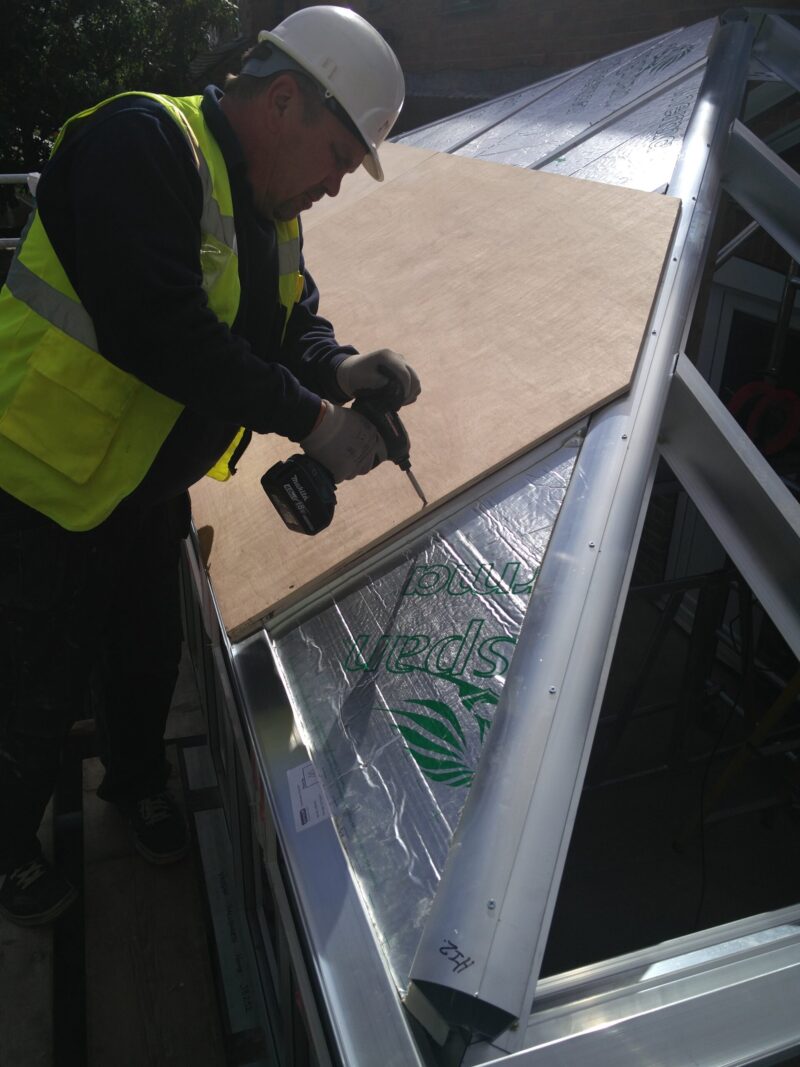6 things to remember when planning your Solid Conservatory Roof
Solid conservatory roofs are growing in popularity as homeowners look to make their conservatory a more comfortable living space. But is a solid conservatory roof the best option for your home? And where can you find someone to install it for you?
At Certass, we are specialists in installer certification, certifying installers who fit a wide range of glazing products, including conservatories. Because of our experience in this area, we know exactly the type of things which homeowners will be asking their installer about, which is why we have come up with 6 things to keep in mind when planning your conservatory roof.
1. Solid Conservatory Roof for New-build or Refurbishment?
Due to the way they are designed and engineered, solid conservatory roofs are usually lightweight, which means that as well as being used to build brand new conservatories, they can also be used to revamp your old one.
Known in the industry as ‘retrofit’, this is an increasingly popular option for homeowners looking to convert their old conservatories, which get too cold in winter and too hot in summer, into comfortable spaces they can enjoy all year round.
If you’re looking for a brand-new solid roof conservatory, you will need an installer who is also able to build the walls and base.
2. Planning Permission and Building Regulations for Conservatories
Most conservatories, whether they’re solid, tiled or glazed roof will not need planning permission as they are considered a ‘permitted development’. There are certain exceptions to what makes a permitted development, such as size and placement, and the details can be found on the Government’s Planning Portal.
Although it may be easy for most to tell the difference between extensions and conservatories, there are specific conditions which need to be met to ensure the two are not confused. Different Building Regulations apply for extensions and conservatories and in order for your project to be classed as a conservatory, it must be separated from the main house with walls suitable for external quality and/or windows and doors that meet regulations. The heating system also needs to be completely independent, with separate temperature controls to the central heating system.
If these requirements are not met, then the conservatory is classed as an extension and different Building Regulations apply. Even if your conservatory meets these requirements, the glazing and electrics will have to meet Building Regulations, and you can find more specifics about your conservatory roof project on the Planning Portal.
3. Is your Installer’s Workmanship Certified?
Certification schemes are a vital way of ensuring that tradespeople are trustworthy and reliable. If an installer or a company isn’t registered to one of these schemes, then their work isn’t checked or verified by any third party, meaning there is more chance for ‘cowboy builder’ type issues.
At Certass, we want to make sure that everything is being done properly, and we run schemes which approve every area of building fabric refurbishment, including solid conservatory roof workmanship standard certification schemes.
4. What About Insulation and Energy Efficiency?
One of the most important topics of discussion for your solid conservatory roof is the energy efficiency. Most people opt for a solid roof because their glazed roof is too inefficient, so this is something which you should definitely ask your installer about.
There is no thermal rating system for conservatory roofs, but your installer will probably mention U-Values instead.
A U-Value measures how effective a material is at insulation. It is measured by the amount of heat lost from a material and the lower the number the less heat loss there is, so low U-Values are much better than high ones.
Solid conservatory roofs are much more energy efficient than glazed ones, and usually have U-Values below 1.0 W/m2K, which means they are brilliant at keeping the cold out and the warmth in.
5. Can you Fit a New Roof to your Old Conservatory Frames?
Yes, you will be able to do install the new conservatory roof straight onto the old frames. The installer will need to do a survey first to ensure that they are stable enough to hold a new solid conservatory roof.
6. Do you Need New Windows and Doors too?
Installing a solid roof will drastically improve the efficiency of your conservatory, but if the windows and doors are old and inefficient, you might still struggle to reap the full benefits. Our certified installers will help you make the best decision for your home.
You can find a trusted conservatory installer on our contractor search.


